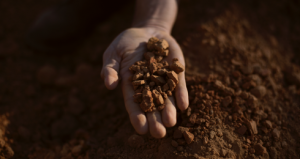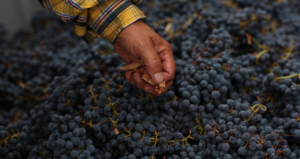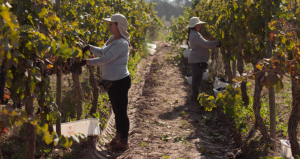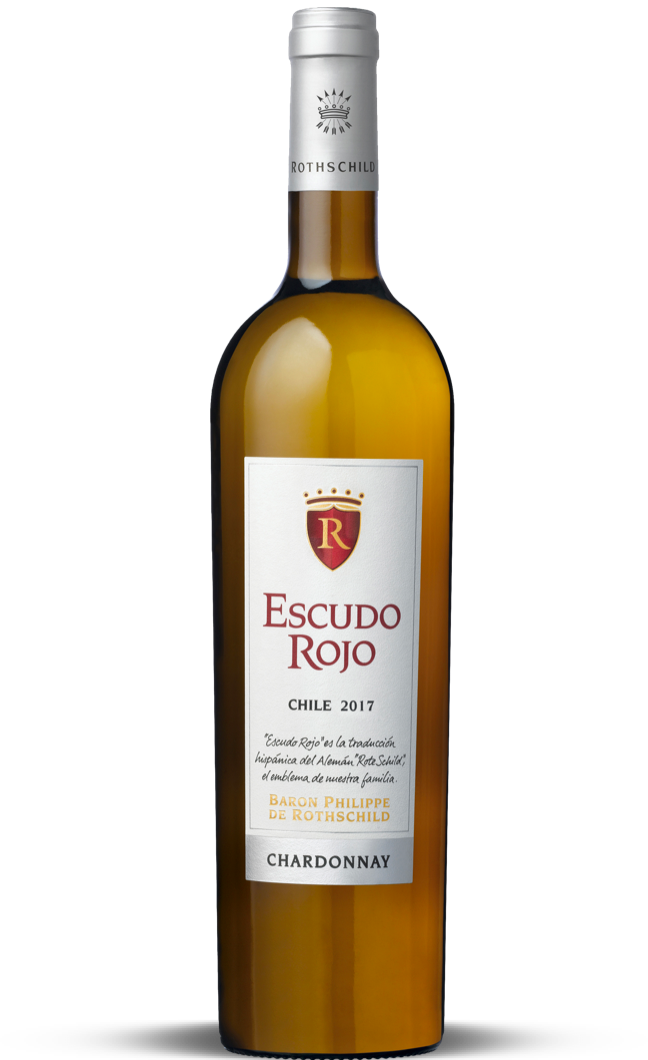Lower than average rainfall, ideally distributed throughout the growth cycle, together with the highest average temperature of the past ten years and more, made this a very Mediterranean-style vintage.
The 2017 wines are therefore generous and powerful, while remaining silky and soft.
They have a very distinctive Chilean identity, especially in the expression of fruit flavours and aromas which, combined with dense and rich mid-palates, reveal the identity of the terroirs to the full.
Producing wines with great ageing potential, 2017 is one of the great Chilean vintages.

Lower than average rainfall, ideally distributed throughout the growth cycle, together with the highest average temperature of the past ten years and more, made this a very Mediterranean-style vintage.
The 2017 wines are therefore generous and powerful, while remaining silky and soft.
They have a very distinctive Chilean identity, especially in the expression of fruit flavours and aromas which, combined with dense and rich mid-palates, reveal the identity of the terroirs to the full.
Producing wines with great ageing potential, 2017 is one of the great Chilean vintages.

Lower than average rainfall, ideally distributed throughout the growth cycle, together with the highest average temperature of the past ten years and more, made this a very Mediterranean-style vintage.
The 2017 wines are therefore generous and powerful, while remaining silky and soft.
They have a very distinctive Chilean identity, especially in the expression of fruit flavours and aromas which, combined with dense and rich mid-palates, reveal the identity of the terroirs to the full.
Producing wines with great ageing potential, 2017 is one of the great Chilean vintages.

The harvest was early, starting on 23 February with the Villavicencio white grapes and ending on 10 May with the Carmenere grapes. At the Maipo winery, grapes came in from 26 March to 17 May.In keeping with the average, grapes were picked 10 to 15 days later than for the 2017 vintage. The decisive factor was a period of relatively low temperatures during the end of the ripening process, from December to February. The grapes ripened more slowly as a result, allowing them to preserve an aromatic freshness sometimes difficult to attain in Chile. This was followed by excellent weather which brought the grapes to optimum phenolic maturity and heralded the start of the harvest. At this stage 2018 is a very promising vintage, combining good concentration and powerful, expressive fruit.
The power of New World wines combined with the refinement of Old World wines!

Lower than average rainfall, mostly occurring during the winter, together with the highest recorded average temperature in the last 50 years or more, were the decisive influences behind the very Mediterranean style of the 2015 vintage.
As a result, the wines are generous and powerful while keeping velvet, silky texture. They display a very distinct Chilean identity, particularly in the expression of the fruit, which, combined with a concentrated mid-palate, brings complexity and richness while revealing the uniqueness of each terroir.
2015 is a vintage with excellent ageing potential.

Rainfall was significantly higher than during an average year, with unusually heavy precipitation in autumn. This had an impact on the vintage, giving it a marine character rarely found in Chilean wines. The greater part of the vine growth cycle took place under ideal weather conditions; however, it remains a very technical vintage, owing its success to the skills and know-how of Baron Philippe de Rothschild Maipo’s vine-growers. Highly expressive of each grape variety and terroir, the wines are balanced, fresh andelegant.
2016, an “El Niño” year, will doubtlessbe remembered as an atypical, singular vintage on account of its unusual rainfall patterns, the advantage of which was to preserve fresh fruit flavours and impart a certain elegance that is sometimes difficult to attain in New World wines.

With very hot summer weather and high temperatures in autumn, the harvest took place 15 days earlier than in 2008. Weather conditions in 2009 were particularly kind to the vegetation cycle and the maturing process, producing grapes rich in aroma and flavour with excellent sugar levels. An exceptional year, 2009 – like 2007 – is one of the finest vintages of the last decade.

The harvest was early, starting on 23 February with the Villavicencio white grapes and ending on 10 May with the Carmenere grapes. At the Maipo winery, grapes came in from 26 March to 17 May.In keeping with the average, grapes were picked 10 to 15 days later than for the 2017 vintage. The decisive factor was a period of relatively low temperatures during the end of the ripening process, from December to February. The grapes ripened more slowly as a result, allowing them to preserve an aromatic freshness sometimes difficult to attain in Chile. This was followed by excellent weather which brought the grapes to optimum phenolic maturity and heralded the start of the harvest.
At this stage 2018 is a very promising vintage, combining good concentration and powerful, expressive fruit.
The power of New World wines combined with the refinement of Old World wines!

Lower than average rainfall, ideally distributed throughout the growth cycle, together with the highest average temperature of the past ten years and more, made this a very Mediterranean-style vintage.
The 2017 wines are therefore generous and powerful, while remaining silky and soft.
They have a very distinctive Chilean identity, especially in the expression of fruit flavours and aromas which, combined with dense and rich mid-palates, reveal the identity of the terroirs to the full.
Producing wines with great ageing potential, 2017 is one of the great Chilean vintages.

These factors enabled the grapes to reach full maturity, producing wines which tend towards a rather Mediterranean style. Powerful and with excellent concentration, they also preserve a “fresh fruit” character and freshness sometimes difficult to achieve in New World wines. Of generally even quality, the different grape varieties perfectly reveal the identity of Chile’s terroirs.
A promising vintage with considerable ageing potential.



